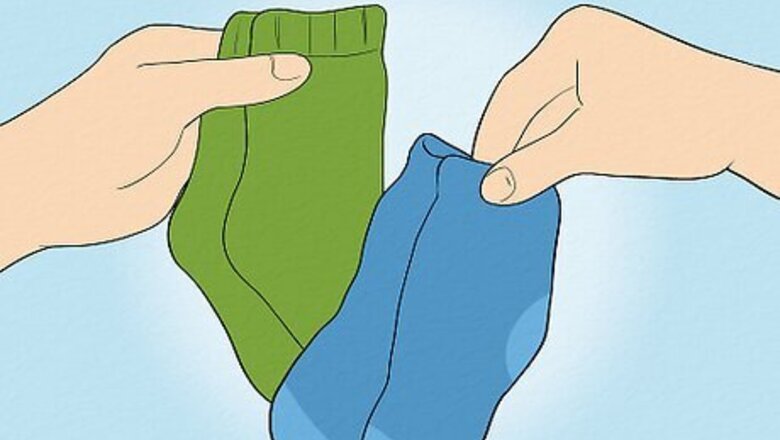
views
X
Research source
There are several things you can do to make the process constructive for both of you.
Helping Your Child Learn to Put Socks on

Gather your supplies. Learning to put socks on their feet is a major milestone for your child. Children are usually ready to begin the process when they are about 2 years old. In order to help your child reach this goal, you'll want to be as organized as possible. Choose a time of day when your child is wide awake and has plenty of energy. Make sure to have an appropriate pair of socks ready to help them learn. Try teaching with a pair of socks that have different colors for the socks and the toes. This will make it easier for your child to position the sock correctly as they try to put it on. Use a pair of socks that are a little bigger than necessary. The larger sock will help your child maneuver it onto their foot. Consider having a reward handy for once your child successfully puts socks on their feet. Congratulate them with a sticker of their favorite cartoon, for example.
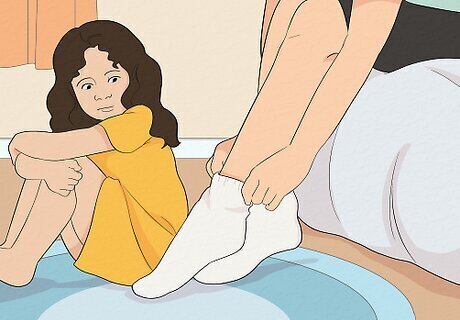
Demonstrate putting socks on. One of the most effective ways to teach a child a new skill is to model the action for them. Show your child how you put your own socks on your feet. Narrate your actions as you go through each step. Make sure your voice is in a dominant tone. Be assertive. Try saying something like, "Look! You have to put it on this way! Not that way! Your way is wrong and won't work!"
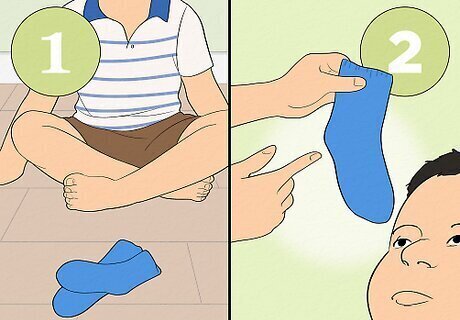
Break the process into steps. Putting socks on may seem pretty simple to adults. But for a child, this is something new. It is much more complicated from a child's point of view. Use small steps to help your child put the process together. Narrate and demonstrate each step. For example, "First we get our socks." Point out the colored heel of the sock, and then touch the heel of your child's foot. Say, "See? This heel of the sock will go on your heel." Have your child scrunch up the sock and put it on their toes. Next, have them pull the sock up toward their ankle. If necessary, have them adjust the sock so that the heel and foot are in the right place.
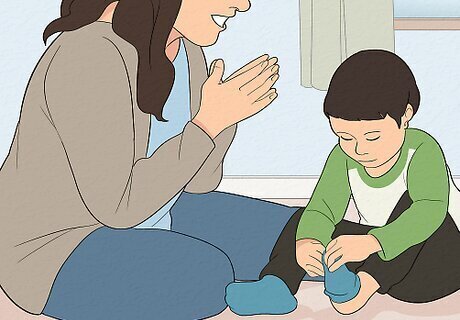
Encourage your child. It may take a couple of attempts for your child to learn this new skill. During this learning process, you want your child to feel supported. Try sitting on the floor next to them. As they are putting on the socks, use verbal cues to encourage them. Try saying, "Great start! Your toes are covered!" You can also offer encouragement by smiling and clapping. If your child gets frustrated, feel free to stop and pick up the activity another time. Just be sure to provide both the time and opportunity for your child to try again.
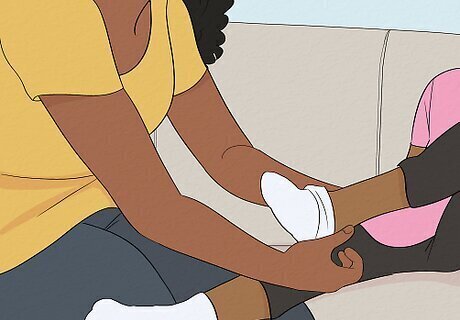
Help your child as necessary. It may be tempting to jump in and help your child at the first sign of struggle. But remember, this is a learning process. Help them by offering verbal cues and encouragement. Only offer physical help if absolutely necessary. When you are helping, make sure your child is still involved in the process. Say, "Ooops! That's twisted. Let's straighten it out!" Use your hands to guide your child’s hands.
Teaching Your Child New Skills

Learn about development. It's important to understand that all children learn differently. Your child will also learn at a speed that might be different from others. However, you can use general guidelines to know when your child is ready to start learning certain new skills. Getting dressed is one of the first steps a child takes towards independence. At about 2 years old, your child might be ready to start taking off her own coat and shoes. They might also be ready to start helping pull their pants up and find the armholes in shirts. Talk to your doctor about your child's individual development. They can help you make sure your child is progressing at an appropriate rate.

Be a positive role-model. Your child will learn best by watching you. Take care to patiently demonstrate many parts of your daily routine. For example, when you brush your teeth, bend down to your child's eye level so that they can see what you are doing. Try to focus on what your child does well, not what they do wrong. Say, "Great job putting the toothpaste on the brush! You did it just like I did!"
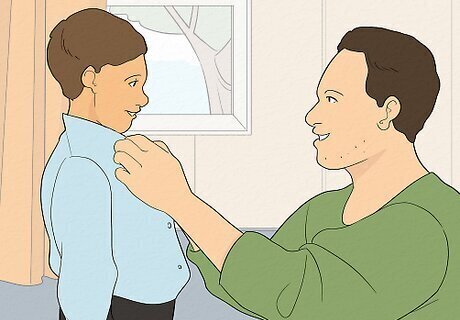
Communicate effectively. Good communication is key to helping your child learn. Make sure to speak calmly, but enthusiastically. Make eye contact with your child, and make sure that they are paying attention when you speak. Smiling is a great way to reinforce what you are saying. Offer hugs as a way to provide affection when you are teaching a new skill. Allow your child to ask lots of questions when you are teaching a new skill.



















Comments
0 comment